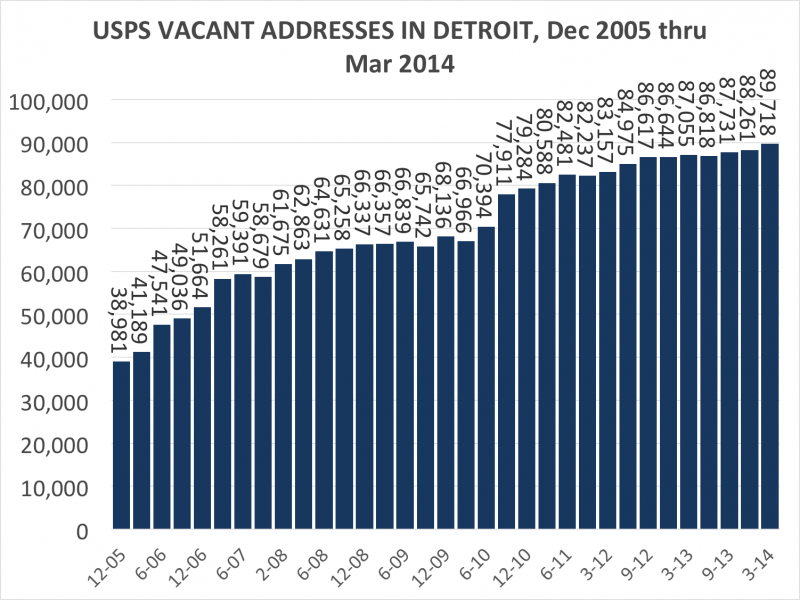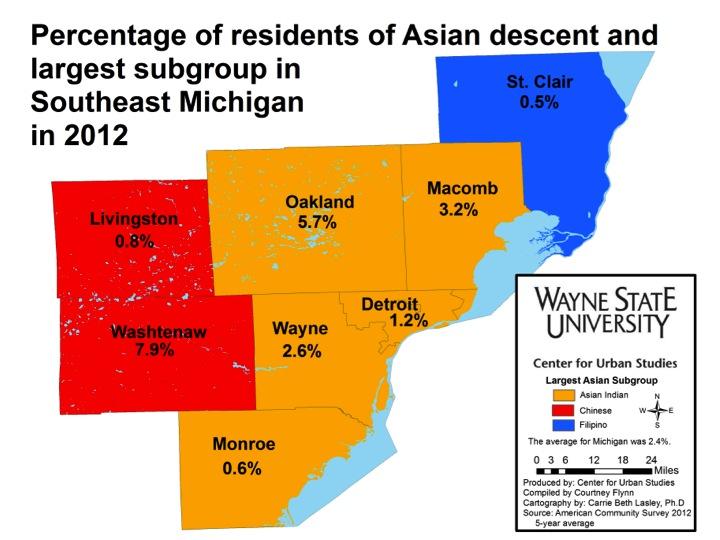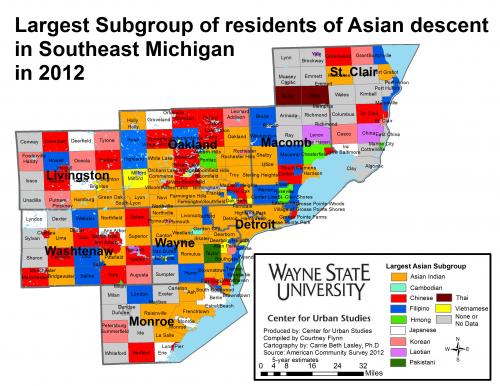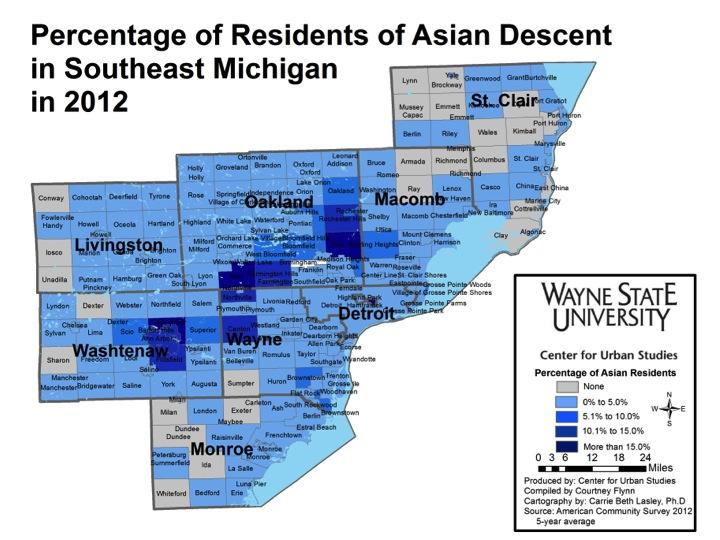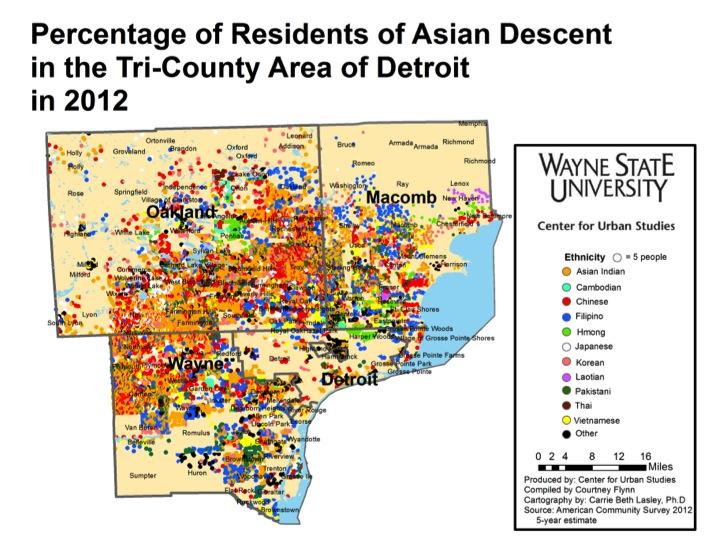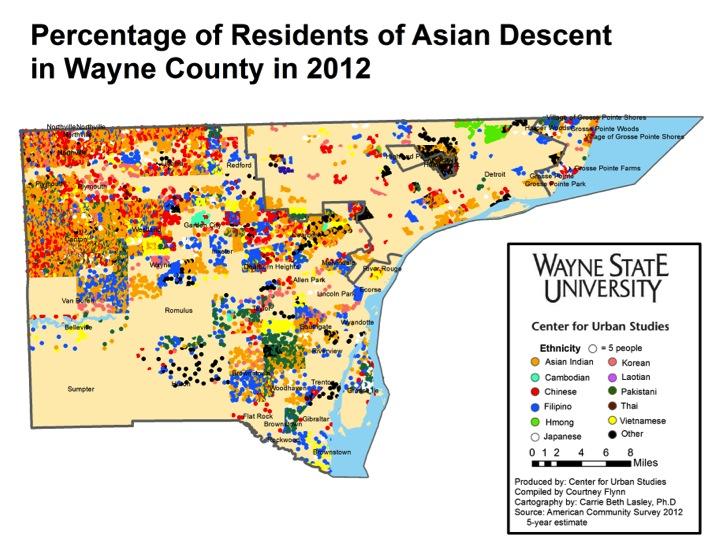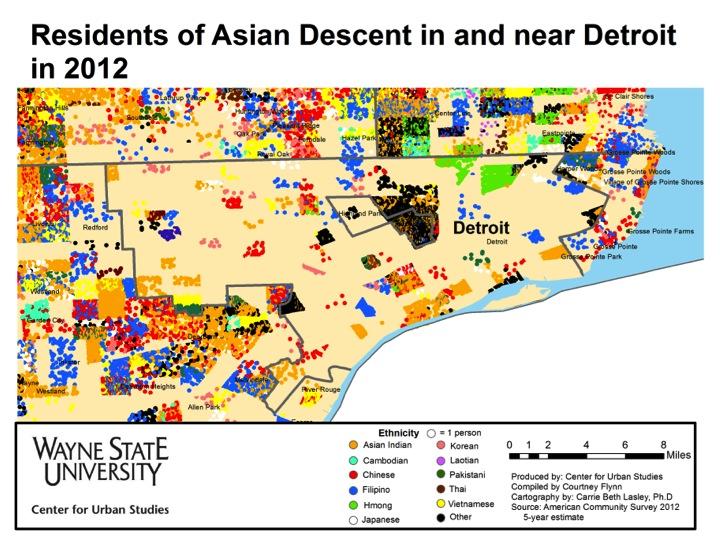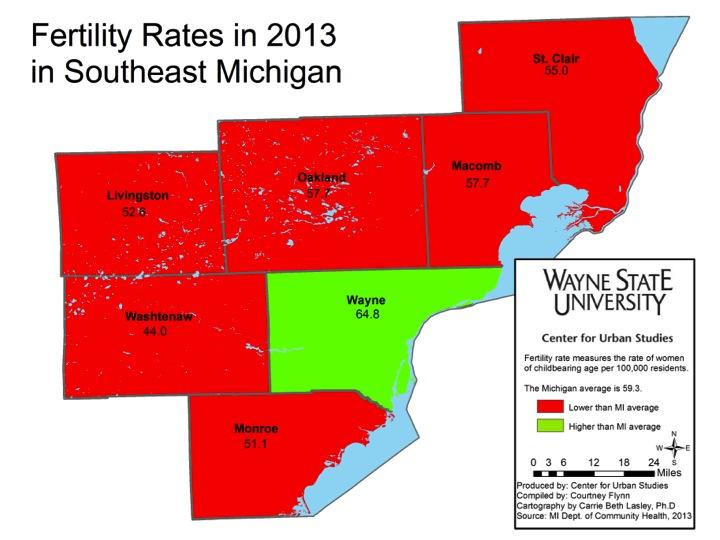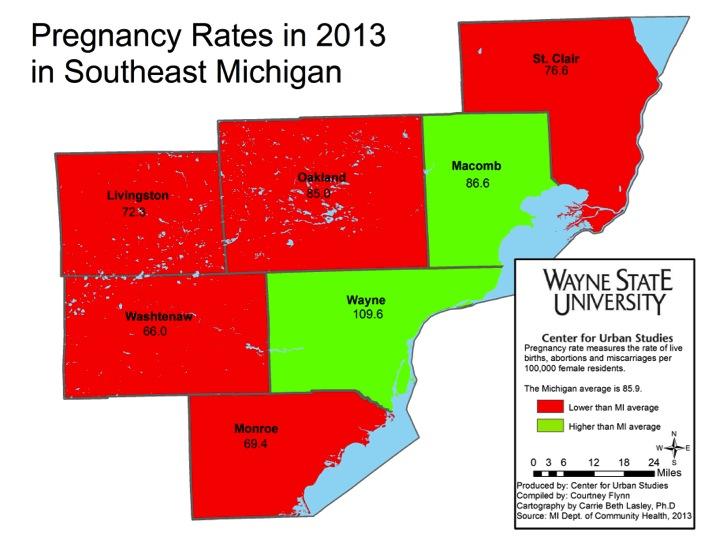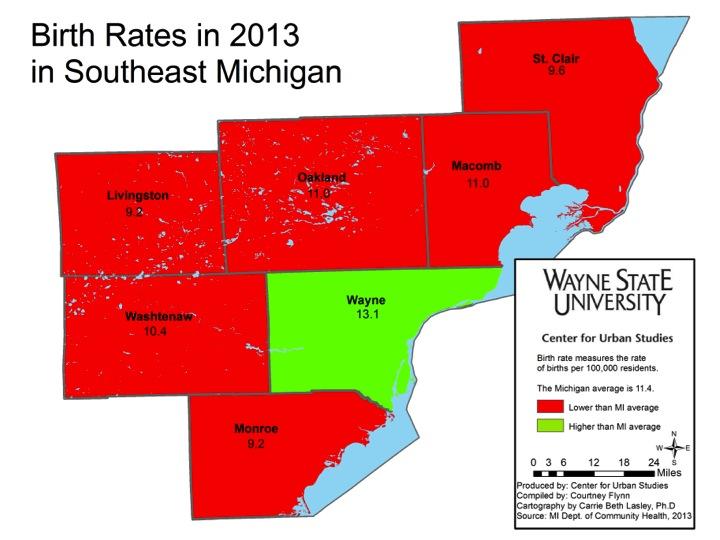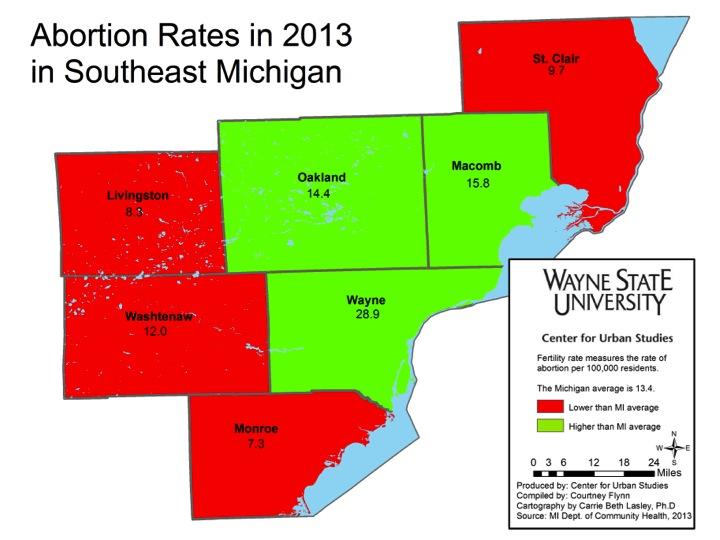In the seven-county region there are several different religious denominations represented. We examine the rate of religious membership to some of the most prevalent denominations in the region. In the following maps, the percentage of residents who claim active membership with these groups will be shown using data from the Association of Religious Data (ARD) and the 2010 American Religious Census; the definitions for these groups are provided below by the ARD.
Catholicism: A form of Christianity where there is a hierarchy of bishops, priests and the pope. In the Catholic Church priests must also be celibate.
Mainline Protestantism :Typically moderate and liberal theological denominations that include the United Church of Christ, Methodist Church and the Episcopal Church.
Evangelical Protestantism: A more conservative movement in the Protestant Church that emphasizes the importance of sharing ones’ faith with non-believers, which is focused on a strong personal relationship with Christ. Examples include Baptists, Anabaptists, Church of God and Pentecostals among others
Black Protestantism: A branch of Protestantism that is similar to Evangelical Protestant denominations. African American protestants focus on the importance of justice and freedom. Such denominations include the National Convention Baptist of America and the African Methodist Episcopal Zion; there are seven major denominations.
Islam: Muslims follow the text of the Koran and focus on the “oneness of God”. There are five pillars practiced in Islam: praying, fasting, almsgiving, pilgrimage and testimony of faith. The two divisions of Islam are Sunni and Shi’a.
Judaism: This is based on texts in the Hebrew Bible
Orthodox Christianity: This includes both Eastern Orthodox Christians and Oriental Christians. In these forms of Christianity there is no central form of leadership.
Latter Day Saints: Also known as Mormonism, this religion is guided by the Book of Mormon and aspects of the Bible. They seek to restore the New Testament.
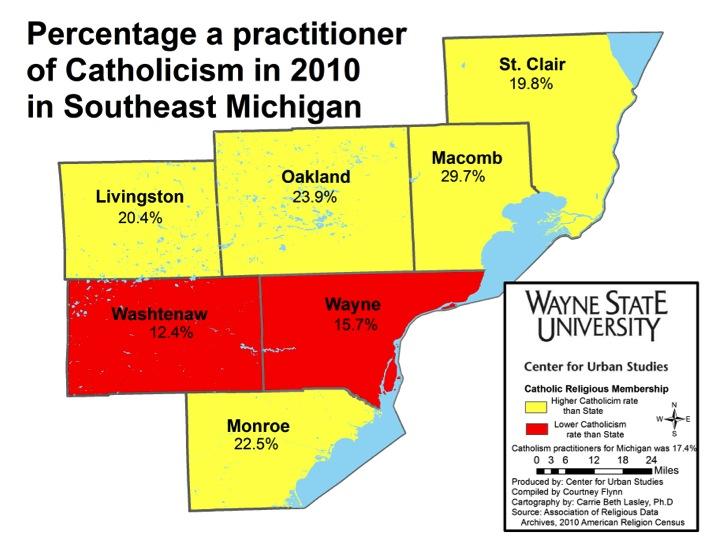
Those who identify themselves as Catholics in the region represent the largest religious based population. The state percentage of Catholics was 17.4 percent. Two counties in the region (Wayne and Washtenaw) where the Catholic population was below that percent. Macomb County had the largest population of Catholics in the region at 29.7 percent.
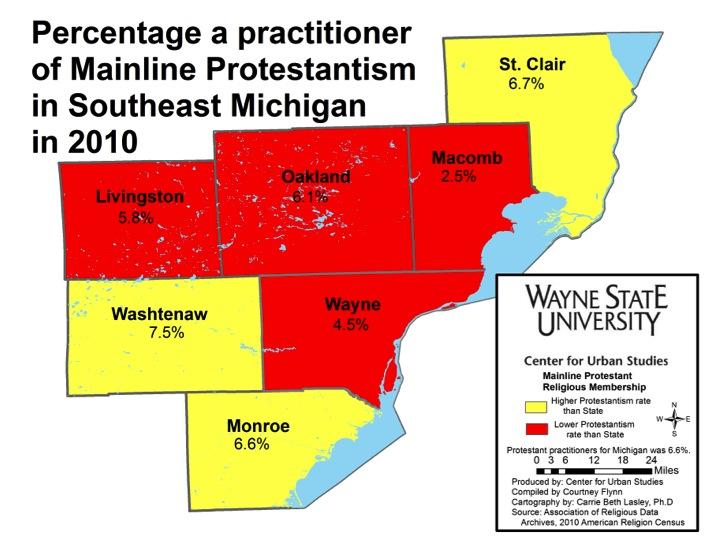
Macomb County had the lowest percent of residents (2.5%) who identified themselves as Mainline Protestants. With the state average being 6.6 percent, Washtenaw (7.5%), Monroe (6.6%) and St. Clair (6.7%)counties were the only ones in the region that were above the state average.
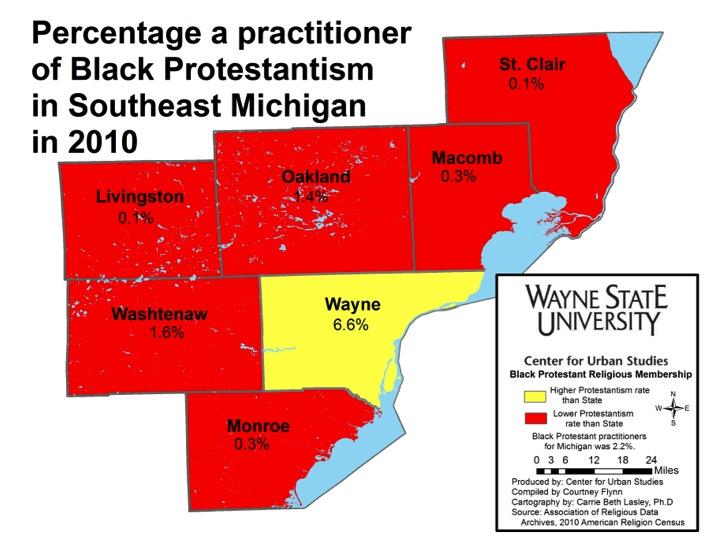
Wayne County had the largest percent of Black Protestant practitioners in the region at 6.6 percent. The county with the second highest population of Black Protestant practitioners was Washtenaw County and that percentage (1.6) was 5 percentage points below Wayne County and .6 percentage points below the state average (2.2%). The City of Detroit is in Wayne County, where the largest African American population resides.
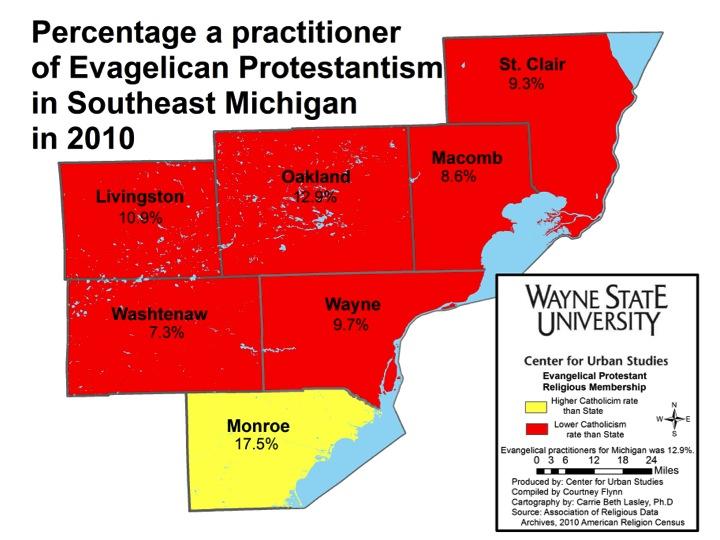
Overall, Evangelical Protestants represent more of the state’s and region’s population than do Mainline or Black Protestants. According to the data, state average for Evangelical Protestants is 12.9 percent. In Monroe County, 17.5 percent of the population is comprised of residents who identify themselves as Evangelical Protestant practitioners; this is the only county in the region above the state average. Washtenaw County had the lowest representation at 7.3 percent.
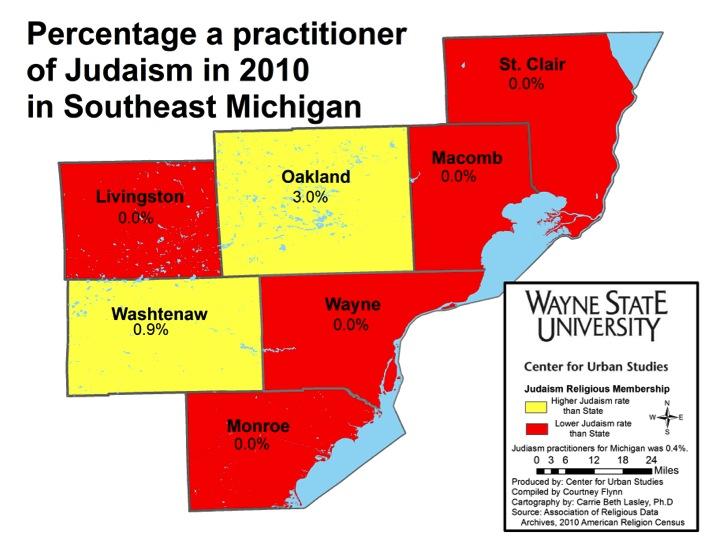
The state average for Judaism practitioners was 0.4 percent and five the seven counties in the region were below this average with 0.0 percent of their population being affiliated with this religious group. Oakland County had the highest population at 3.0 percent. The Holocaust Memorial Museum of Michigan is located in Oakland County, as is the Jewish Federation of Metropolitan Detroit.

Those who are members of the Muslim religious group in Southeast Michigan were most heavily represented in Wayne County at 3.6 percent, above the state average of 1.2 percent; the City of Dearborn is located in Wayne County. The only other county above the state average was Washtenaw County where 1.3 percent of the population identified as being a practitioner of Islam.
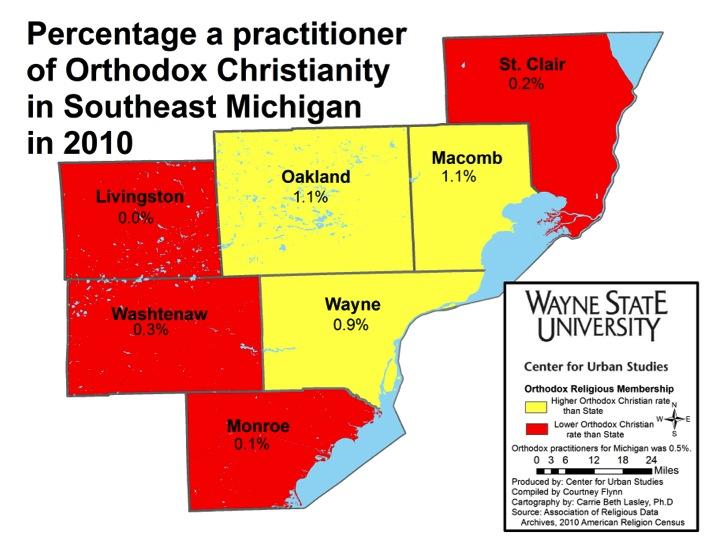
The state average for those who practice Orthodox Christianity was 0.5 percent; Wayne (0.9%), Oakland (1.1%) and Macomb (1.1%) were the only counties in the region above the average. Livingston County was the only one in the region where 0.0 percent of the population stated that they did not affiliate with this religious group.
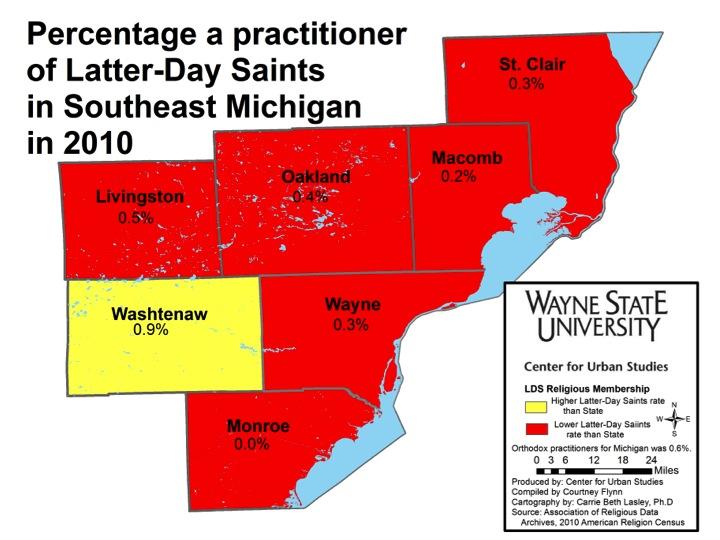
The Church of Latter Day Saints is one of the religious groups in the region that has a lower representation. Washtenaw County was the only county in the region above the state average of 0.6 percent; with practitioners representing 0.9 percent of the population.
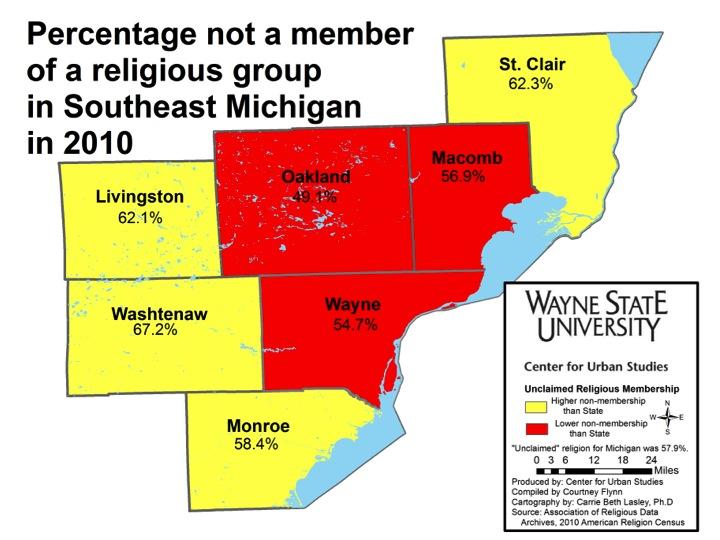
This map shows the percentage of people in the region who either don’t affiliate with a religion or who aren’t associated with the most common religions discussed in this post. The percentages represented in the map above are not directly correlated with irreligion or atheism. According to the data, in the state of Michigan, 57.9 percent of the population did not identify with one of the common religious groups or with one at all. St. Clair, Washtenaw, Livingston and Monroe Counties were above the state average with Washtenaw County having the largest population at 67.2 percent.
